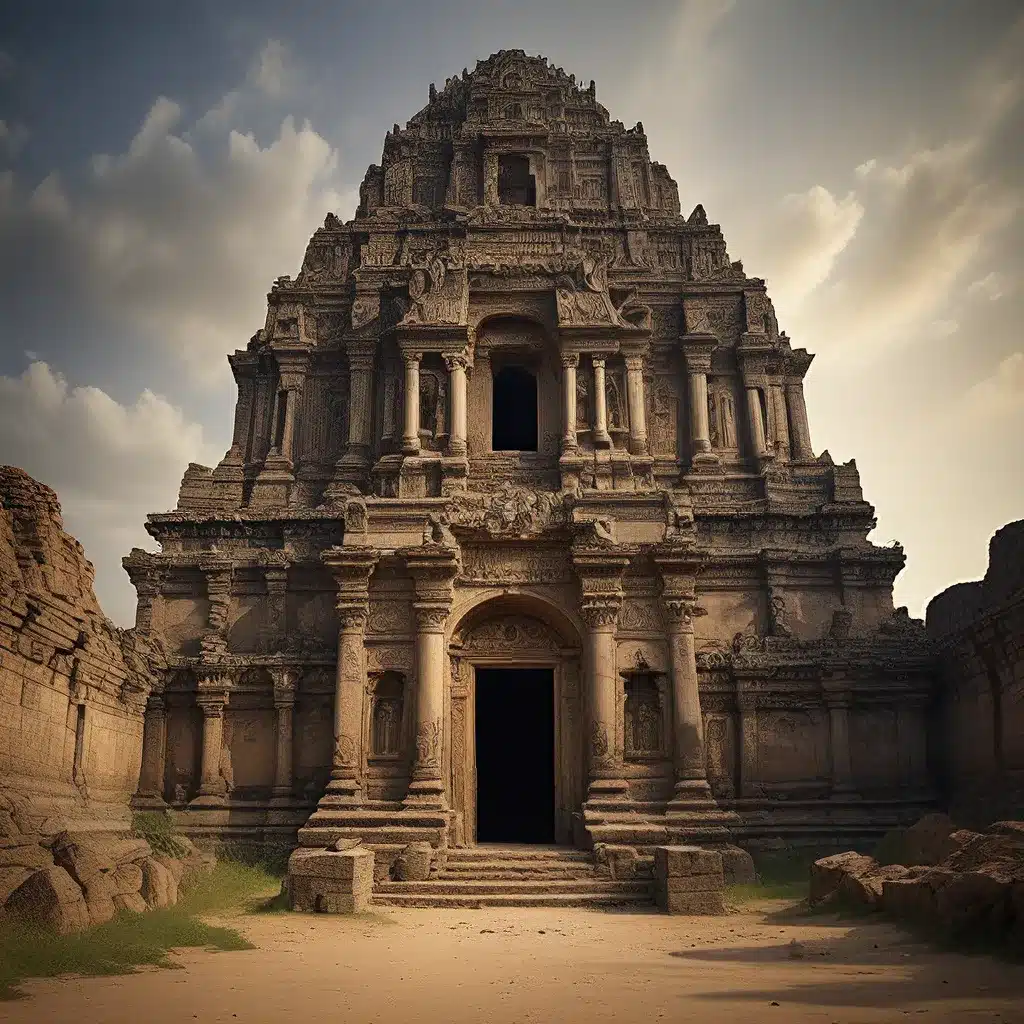
Unlocking the Mysteries of Ancient Civilizations
Humanity’s fascination with the remnants of bygone eras is as old as history itself. From the towering monoliths of Stonehenge to the intricate labyrinths of Hyperion, our collective curiosity has been piqued by the tantalizing clues left behind by lost empires. These ancient structures, buried beneath the sands of time, hold the keys to unlocking the mysteries of our past, revealing insights into the lives, beliefs, and technological prowess of civilizations long since vanished.
One such captivating example is the Çatalhöyük site in Turkey, which dates back to the Neolithic period, around 7500 BCE. Nestled in the Mesopotamian region, this remarkable city was a testament to the ingenuity and resourcefulness of its inhabitants. The architectural style of Çatalhöyük, with its honeycomb-like arrangement of houses and rooftop access, hints at a unique social structure and way of life. The discovery of fertility goddess figurines within the homes further suggests the importance of spirituality and belief systems to the people who once called this place home.
Similarly, the Mayan city of Palenque in Mexico offers a glimpse into the grandeur and sophistication of a civilization that rose to prominence during the classical period, from around 700 to 1100 CE. With its meticulously carved sculptures, intricate inscriptions, and well-preserved temples and palaces, Palenque stands as a testament to the Mayan people’s architectural and artistic prowess. Yet, the ultimate fate of this great city, like so many other Mayan centers, remains shrouded in mystery, with theories ranging from warfare and famine to climate change contributing to their eventual abandonment.
Unraveling the Enigmas of Cahokia
Across the Atlantic, the ancient city of Cahokia, located in what is now the United States, presents another fascinating chapter in the story of humanity’s past. Often referred to as the “American Stonehenge,” Cahokia was a thriving urban center that existed between 700 and 1400 CE, predating the rise of the Aztec and Inca empires. Its impressive earthen mounds and evidence of a complex social hierarchy suggest a highly organized society, one that relied on sophisticated agricultural practices and trade networks to sustain its population.
The sheer scale and complexity of Cahokia have left archaeologists and historians alike captivated by the mysteries that still shroud this remarkable site. Why did this ancient metropolis ultimately fall into ruin? What was the nature of the social and political structures that governed Cahokia’s inhabitants? The search for answers has led to a deeper understanding of the unique cultural and technological achievements of this long-lost civilization.
Exploring the Alien Landscapes of Göbekli Tepe
Venture further east, and you’ll encounter the extraordinary site of Göbekli Tepe, located in southeastern Turkey. Dated to around 9500 BCE, this ancient complex predates the construction of Stonehenge by several millennia, making it one of the oldest known examples of monumental architecture in the world. The massive, carved T-shaped stone pillars that dot the landscape are a testament to the engineering prowess and spiritual beliefs of the people who inhabited this region during the Neolithic period.
What sets Göbekli Tepe apart is the sheer scale and complexity of its construction, as well as the apparent lack of a settled agricultural society to support such a feat. The presence of these elaborately carved monoliths, some weighing up to 20 tons, has led researchers to hypothesize that this site may have served as a sacred gathering place for hunter-gatherer societies, perhaps even playing a role in the development of organized religion and the eventual transition to more sedentary, agricultural-based communities.
Deciphering the Secrets of Easter Island
No exploration of ancient mysteries would be complete without mentioning the iconic moai statues of Easter Island, or Rapa Nui as it is known to the native Polynesian population. These colossal, enigmatic figures, carved from volcanic rock, have captivated the imagination of people around the world, sparking countless theories and speculation about the civilization that created them.
The sheer logistics of moving and erecting these massive sculptures, some standing up to 40 feet tall and weighing several tons, have long puzzled scholars. How did the inhabitants of this remote, isolated island possess the necessary resources, technology, and organizational abilities to undertake such a monumental feat of engineering? Furthermore, the eventual deforestation of the island and the collapse of the Rapa Nui civilization have been the subject of intense debate, with theories ranging from environmental degradation to societal upheaval.
Unraveling the Enigmas of the Past
These are just a few examples of the many ancient sites and civilizations that continue to captivate our collective imagination. From the mysterious Nazca lines of Peru to the Terracotta Army of China, the world is dotted with the remnants of lost empires, each one offering a tantalizing glimpse into the past and the ingenuity of our ancestors.
As we delve deeper into the study of these ancient sites, we unlock not only the physical structures and artifacts left behind but also the cultural, social, and technological advancements that shaped the course of human history. The quest to unravel the mysteries of the past is a continuous journey, one that fuels our curiosity, challenges our preconceptions, and ultimately enriches our understanding of the human experience.
Through the lens of archaeology and historical analysis, we can piece together the stories of these vanished civilizations, shedding light on their triumphs, struggles, and the legacies they’ve left behind. By exploring the enigmatic structures and artifacts of the past, we gain a deeper appreciation for the resilience, creativity, and ingenuity of our forebears, and perhaps even glean insights that can inform our own understanding of the present and shape our vision for the future.


